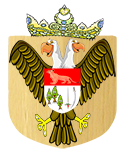Neuroblastoma
Neuroblastoma is a cancer which mainly affects children.
There are several types of Neuroblastoma and some types can be treated very well and are low risk. The more severe type of Neuroblastoma is a cancer with a high risk potential fatal outcome. However, research is ongoing (could use more resources and attention) and new treatments are being developped/trialled.
Neuroblastoma is not a fashionable children's cancer like Leukaemia. "Fashionable"!? Yes, with that we mean that it is not getting a lot of attention. And that affects funding and research. Let us therefore mention Neuroblastoma to family, friends, neighbours, medical professionals/students, researchers, politicians and anyone who wants to hear. If you have a child with Neuroblastoma it can be, or is likely to be, a traumatic experience and talking about it will help you as well.

Neuroblastoma is like any cancer a complicated thing to explain. It is not our intention to use this website to set out all the details of what it entails and what the treatments are etc. This has been done by many others and we feel it is better to have all the facts together in a couple of websites rather than in many with all small nuances and maybe some missing info. So for a more detailed overview of what Neuroblastoma is and what the treatments are please have a look at the links page.
Missing or Hard to Find Information?
However, on the other hand there is a need to have one website which clearly explains all the current treatments worldwide. We would encourage this to include an overview of current research and all the (clinical) trials and tests being done. We also would encourage to include a section on complementary and alternative medicines. We recognize that there may be resources for oncologists and professionals but these are mostly not easy to navigate for the laymen and women. Why worldwide? Well, we learned that a lot of parents go accross borders to find the best treatment for their child. In some countries the latest treatments are not yet established, or there is no access to new clinical trial treatments. Parents travel anywhere and pay whatever is needed to save their child. Lets give them an easy to understand overview on what is out there. It would also give the public and politicians an idea on what still can be done. If that country has it, why don't we?
Types of Neuroblastoma
A quick overview of Neuroblastoma, the different types/stages. There are two systems of labelling the different types. First we have the INSS ("International Neuroblastoma Staging System"), established 1986, revised 1988 and then there is the proposed INRG ("International Neuroblastoma Risk Group").
But first you need to know about N-Myc
It is important to note that if the tumour biopsy shows a very aggressive disease (the gene called N-Myc is “amplified”) then staging becomes less relevant. Amplified N-Myc means the tumour is very aggressive and high risk protocol will automatically be followed even if the tumour has not spread to other parts of the body.
Stage 1 Neuroblastoma (INRSS stage L1)
The tumour is fairly small and confined to one site and it has not spread anywhere else in the body and it is able to be removed completely by an operation. This type of tumour is usually curable by surgery alone.
Stage 2 Neuroblastoma (INRSS stage L1)
As with stage 1, the tumour is confined to one site and has not spread to distant parts of the body. However it may be larger than a Stage 1 neuroblastoma and at operation, it may be more difficult to remove completely. Sometimes a lymph node or some glands near to the stage 2 neuroblastoma may also have been affected by the tumour. Stage 2 neuroblastoma may be treated with surgery alone or with chemotherapy.
Stage 3 Neuroblastoma (INRSS stage L2)
The tumour is also confined to the primary site and has not appeared in other distant parts of the body. The tumour may be very large and said to have crossed the ‘mid-line’ of the body. This means that the tumour has grown right across the child’s abdomen or chest from the original site where it began. In the case of stage 3 tumours, chemotherapy treatment will often be initially recommended to try and shrink the tumour for subsequent surgical removal. Further treatment will depend on the other tests described above.
Stage 4 Neuroblastoma (INRSS stage M)
This means that the primary tumour may be of any size but some neuroblastoma cells have broken away and spread to other organs of the body, most commonly bones, bone marrow or liver. Drug therapy (chemotherapy) will usually be recommended for a stage 4 neuroblastoma. This has 2 aims:
a) to kill tumour cells that have spread to different body organs
b) to shrink the primary tumour for later removal by an operation
After surgery, further drug therapy is given. Other treatment may then follow depending on the results of the tumour biopsy and how aggressive the neuroblastoma is.
Stage 4S (INRSS stage MS)
This is a special type of tumour found in very young babies, under one year old. The tumour cells may have spread beyond the “primary site” to other parts of the body but the cells usually behave in a less aggressive fashion than in older children. The tumour may even shrink and disappear without treatment. Alternatively, low doses of either radiotherapy or chemotherapy may be used.
Ganglioneuroblastoma
Ganglioneuroblastoma is another type of tumour, but a close relative of neuroblastoma. It can present in any age group but the cells of this tumour are more ‘mature’ (less likely to spread) than those of ordinary neuroblastoma.
Other factors and terms used:
age
dichotomized at 18 months
tumor grade
N-myc amplification
unbalanced 11q aberration
Four pre-treatment risk groups:
very low
low
intermediate
high risk
Nutritional Health
Another aspect which we find important to point out is how nutritionally healthy a child is. This is always important with reference to any disease. However, with cancer and all the treatments that can come with it this becomes especially important. The healthier a child's weight is, the stronger it is an all other aspects, the better it can deal with all the nasty side effects. And being able to handle the treatments is important as delays in treatments, therefore prolonged treatments, can weaken the body and give the cancer a chance to come back or resist. Let them eat a lot and healthy where possible. A bit of fat on the meat won't hurt (but being overweight may of course do harm). If healthy food isn't tollerated than let them eat what they want. Discuss these issues with the oncologist and the hospital's or oncology dietician/nutritionist.

